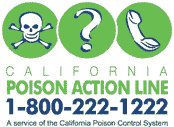
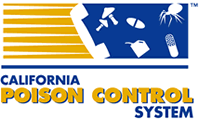
Know Your Plants
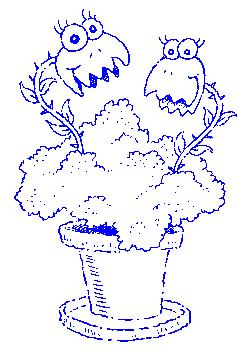 Indoor and outdoor plants are responsible for a rising number of accidental poisonings. Plant ingestions are among the top five causes of accidental poisonings in children younger than 5 years. Pets are also frequent victims of plant poisonings.
Indoor and outdoor plants are responsible for a rising number of accidental poisonings. Plant ingestions are among the top five causes of accidental poisonings in children younger than 5 years. Pets are also frequent victims of plant poisonings.
- Young children and pets will often chew and eat anything within reach, no matter how it tastes.
- Eating a small amount of a plant may not always be a problem, but large or repeated doses may be extremely harmful.
- There is no easy test for knowing poisonous plants from those that are safe.
- Many plants cause nausea, vomiting, abdominal cramps and diarrhea.
- Some plants have substances that are very irritating to the tongue, mouth and skin. Immediate burning pain in the mouth along with swelling is common.
- Some plants can cause a skin rash. Sometimes the rash only occurs after being in the sun or gets worse with exposure to sunlight.
- Don't assume a plant is safe for humans just because animals or birds eat it without harm.
- Heating and cooking do not necessarily destroy the toxin in a mushroom or a plant.
Scientific studies have not been done on most herbal products. Herbal products are not regulated by the Food and Drug Administration for purity, potency and effectiveness. Long-term effects are rarely known. Drug interactions between herbal preparations, prescription and over-the-counter medications may occur. Use at your own risk.
Pregnant women, breast-feeding moms, infants and young children should not use herbs unless approved by a physician. Older people with serious medical conditions and those taking prescription medications should also seek approval from a physician before using herbs.
Everyone should be aware of the potential danger of plants. Although most plants are poisonous because they can cause some kind of harm, only a small number of plants are actually deadly. Usually a large quantity of berries, pods, leaves, flowers or seeds must be eaten to cause symptoms. Be aware of plants treated with pesticides or fertilizers. Non-toxic plants treated with toxic chemicals become dangerous because of the chemicals. 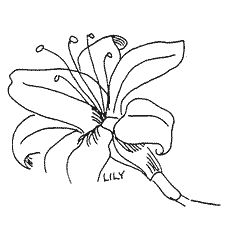
- If you have small children or curious pets, keep all plants out of their reach.
- Before buying a new plant, have the store label the plant with the common and Latin name.
- Know the names of all your plants both inside and outside the house. Show grandparents and babysitters where to find the plant names. Poison Center staff cannot identify a plant from a plant description given over the phone.
- Grandparents and babysitters who care for your child away from your home should also know the names of the plants in their homes.
- Mushrooms and berries are very attractive to children.
- Teach children not to put any part of a plant in their mouth. This means leaves, berries, stems, bark, seeds, flowers, nuts, pods and bulbs.
- Teach children that sucking the nectar from flowers is not safe.
- Never let children chew on jewelry made of decorative seeds or beans. Some are very dangerous.
- Store labeled bulbs and seeds safely out of the reach of children and pets. Do not confuse bulbs with onions or shallots.
- Never use anything prepared wild from nature as a "natural" medicine or tea. The result could be very dangerous or even lethal.
- Wear gloves and protective clothing when handling plants that can be irritating to the skin. Wash hands and clothes well afterwards.
- Smoke from burning poisonous plants (especially poison oak) can irritate the eyes, nose, throat and lungs.
- When you are camping, hiking, picnicking or traveling with young children, take syrup of ipecac with you. If an ingestion occurs, you will be prepared.
Thirty types of plants account for the majority of plant calls to California Poison Centers. They are listed below in descending order of frequency of calls. Most plant calls to the Poison Center (almost one in 10) involve an unidentified plant. Select plant names for photos and information. New browser will link to resources of CalPhotos / Digital Library Project of the University of California Berkeley. Disclaimer and caution: many links are to general and common plant names and families -- not exact scientific names. 
Plant name, Toxicity
Unidentified plant, unknown
Philodendron family, oxalates
Pyracantha species, non-toxic
Oleander (Nerium), dangerous to the heart
Dumb cane (Dieffenbachia), oxalates
Pothos (Epipremnum aureum), oxalates
Weeping fig (Ficus benjamina), dermatitis
Poinsettia (Euphorbia pulcherrima), non-toxic
Poison oak (Toxicodendron), dermatitis
Ornamental peppers (Capsicum), irritant to mouth/eyes/skin
Heavenly bamboo (Nandina domestica), non-toxic
Jade plant (Crassula argentea), non-toxic
Holly (Ilex), vomiting
Eucalyptus, vomiting
Calla lily (Zantedeschia), oxalates
Peace lily (Spathiphyllum), oxalates
Schefflera (Brassaia actinophylla), dermatitis
Asparagus fern, non-toxic
Rhododendron, dangerous to the heart
Chrysanthemum, dermatitis
Silver king/Silver queen (Aglaonema), non-toxic
African violet (Saintpaulia ionantha), non-toxic
Nephthytis (Syngonium), oxalates
Geranium (Pelargonium), dermatitis
Oak (Quercus), dangerous to liver/kidney
Ivy (Hedera helix), dermatitis
Jimson weed (Datura), dangerous to heart/hallucinogen
Indian hawthorn (Rhaphiolepsis indica), non-toxic
Rose (Rosa), non-toxic
Dandelion (Taraxacum officinale), non-toxic
- Complete CPCS list of safe plants
- Complete CPCS list of toxic plants
Of the calls about plants to the poison center, one in five involves plants containing oxalate crystals. Oxalate-containing plants have microscopic crystals in the juice or sap. These crystals look like tiny needles or splinters of glass. When these plants are chewed, intense mouth pain and irritation can result.
Young children with only a few teeth do not have as much of a problem with these plants as do older children or adults. When a person with a full set of teeth chews or grinds these plants, the crystals are released and pain results. Young children cannot do enough damage to the plant to cause themselves harm.
Remember, Poison Center staff cannot identify plants over the phone based on a description. A very common poison center call is a call asking if the shrub in the back yard that has shiny green leaves and white flowers in the spring is dangerous. The Poison Center staff always advise that the plant be taken to a reputable nursery for identification. There is time for identification. Plants are not digested quickly so immediate symptoms are rarely seen.
Some parents or caregivers either cannot or will not get the plant identified. The caregiver is then faced with making an unpleasant and risky treatment decision: wait to see if anything dangerous occurs or treat even though the plant might be non-toxic. Statistics show that one out of ten plant ingestions in California involves a plant that is never identified.
 The following is a list of plants that can be highly toxic: The following is a list of plants that can be highly toxic:
Most of the preceding toxic plants grow outdoors.
If you have curious children and pets that chew, do not plant these potentially dangerous plants in your yard. If these plants are already in your garden or on your property, consider removing them or fencing them. If neither is an option, do not leave children or pets unsupervised in those areas. Remember, it takes only the second you turn your back for a poisoning to occur.
As a general rule, plants that are listed as toxic to humans should also be considered toxic to animals. There are a few cases of plants considered non-toxic or mildly toxic to humans causing problems to animals.
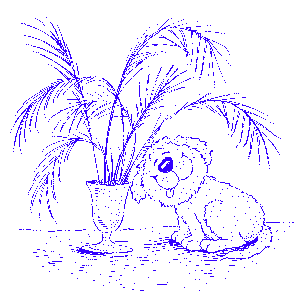 Dogs: Onion, Garlic, Heavenly bamboo, Schefflera, Dracaena Dogs: Onion, Garlic, Heavenly bamboo, Schefflera, Dracaena
Cats: Calla Easter lily, Philodendron, Pothos, Scindapus
Birds: Avocado
- Remove any remaining plant parts from the mouth.
- If the victim is choking and cannot breathe, call 9-1-1.
- Otherwise, call the Poison Control Center.
- If you are advised to go to an emergency room for treatment, take the plant or a part of the plant with you. Do not take a single leaf or a single berry.
- If you are advised to go to a nursery to get the plant identified, keep in mind that plants are usually not very quickly digested, so there is time to get a correct identification. The correct name can result in the proper treatment to prevent symptoms from occurring if the plant was poisonous. If the plant was not dangerous, knowing the name can prevent needless treatment and worry.
California Poison Control System
1-800-222-1222 . . Anytime, Anyplace in California
Article excerted from the California Poison Control System for community eduaction. For more informations about poisoning please visit www.calpoison.org |
|
![]()
 info
info




 The following is a list of plants that can be highly toxic:
The following is a list of plants that can be highly toxic:
 Dogs: Onion, Garlic, Heavenly bamboo, Schefflera, Dracaena
Dogs: Onion, Garlic, Heavenly bamboo, Schefflera, Dracaena